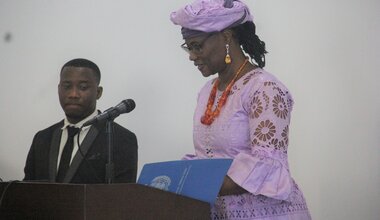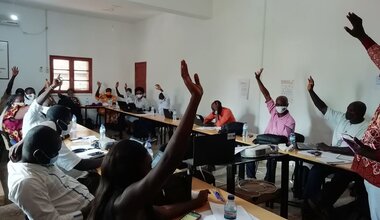WFD: Guinea-Bissau forests still at risk despite good protection system
Guinea-Bissau has a rich natural heritage, with biodiversity of worldwide relevance, which projects the country on the international scene, attracting support for conservation and sustainable development, with enormous potential to become an ecotourism industry.
The south of the country consists essentially of clump forests with some of the country's best-preserved forest patches, probably housing the most dense northern forest area in West Africa.
The human pressure in search of spaces for agriculture, construction and commercial purposes, and of woody material (firewood, coal) for the production of energy, etc., have led to the degradation of the clump forests of the zone.
Studies by the World Resources Institute (WRI), a Washington-based research center, reveal that Guinea-Bissau is among the fastest deforestation countries.
In 2015, due to increased tree-cutting following the coup d'état on 12 April 2012, the Guinea-Bissau government decided a 5-year moratorium on tree cutting across the country and promoted awareness-raising campaigns and information on "the seriousness of the situation prevailing in the forests" of the country and ongoing conservation efforts.
The State of Guinea-Bissau created in 2004 the Institute of Biodiversity and Protected Areas (IBAP), with the aim of ensuring the good management of protected areas and the conservation of biodiversity. Parks were created in the south of the country, in the regions of Tombali Mato of Cantanhez, and in the Quinara Natural lagoon Park of Cufada.
The Natural lagoon Park of Cufada was created in 2000, and enjoys the status of RAMSAR site, a World Wetland Zone. Located about 22 km from Buba City towards Fulacunda, it has the largest freshwater surface of Guinea-Bissau on the south bank of the Corubal River with an extension of 890.km2 or 89,000 hectares.
The Government recently announced its intention to build a thermoelectric plant in the natural park of Cufada, which fueled controversy and tension between those who defend the construction of the plant and others who think that this constitutes an attack on the natural heritage of their ancestors.
The coordinator of the Department of Surveillance of Protected Areas, Joao Sousa Cordeiro, recalls that "the Cufada’s lagoon has great environmental importance both nationally and internationally, it is a reservoir of fresh water that supplies all the water tables and it is a place that serves as a refuge for birds coming from Europe, but the threats that endanger the park persist, and one of them is the deforestation, occupation of space for housing and cashew estates, among others.
Concerning the situation of the forest in general, the deputy delegate of forest at Quinara level, Manuel Gomes, considered "the current situation of the forest stable, since there was a considerable decrease in tree felling after the five-year moratorium of the government".
The program manager of the Institute for Biodiversity of Protected Areas, Justino Biai, said that "forests play an important role in ecological balance. The construction of the power station in Buba, within the limit of the park without a priori doing an environmental impact study, and no one took into account environmental law, so the construction of the park was illegal."
This specialist also assured that IBAP does not oppose the construction of the Buba power station because they are aware that development cannot be galvanized without energy, but the problem is its location.
The deputy representative of the United Nations Development Program (UNDP), Gabriel Dava, recalls that "the entire development of this country has to be done in a sustainable way, i.e. the rational use of natural resources. So our whole approach has to be in the sense of thinking about sustainability, how to develop the country or the world at large, without affecting nature, taking care to preserve the natural resources that are delectable."
Considering the need to raise awareness of the importance of forests for the maintenance of life on earth and the need to preserve them, in 1971 the Food and Agriculture Organization of the United Nations (FAO) suggested the adoption of a "World Forest Day".
 UN
UN





